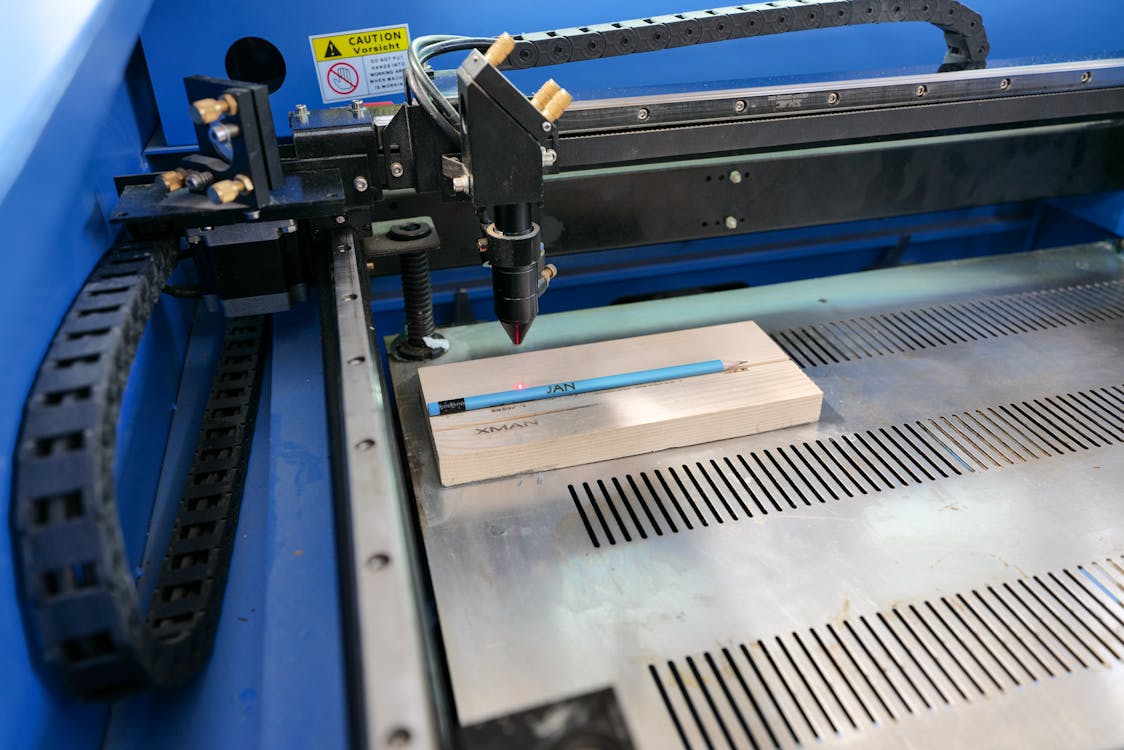UV Laser Marking Machines
The Technology Behind UV Laser Marking
Ultraviolet (UV) laser marking machines operate on the principle of photochemical ablation. Unlike infrared lasers that rely on thermal energy, UV lasers emit photons with higher energy levels, typically in the wavelength range of 355 nm. This high-energy photon stream enables the breaking of molecular bonds on the material surface without significant thermal impact. The result is a precise, high-contrast mark achieved through a non-contact process that minimizes damage to the substrate.
The core component of a UV laser marking machine is the diode-pumped solid-state (DPSS) laser. It employs a nonlinear crystal to generate the third harmonic of the fundamental infrared wavelength, effectively converting 1064 nm infrared light into 355 nm ultraviolet light. The beam quality and stability are critical, requiring sophisticated beam shaping and focusing optics to maintain consistent marking performance.
Advantages of UV Laser Marking over Other Methods
UV laser marking offers several distinct advantages compared to traditional marking technologies:
Non-Thermal Interaction: The photochemical process reduces heat-affected zones (HAZ), preventing thermal stress and deformation in sensitive materials.
High Precision: The shorter wavelength allows for a smaller spot size, enabling ultra-fine marking with exceptional detail and legibility.
Versatility: UV lasers can mark a wide range of materials, including plastics, glass, ceramics, and metals, without the need for additional additives or coatings.
Permanent Marks: The marks are resistant to abrasion, chemicals, and environmental factors, ensuring long-term traceability and compliance with industry regulations.
Applications in Industry
UV laser marking machines have become indispensable tools across various industries:
Electronics: Marking PCBs, microchips, and electronic components with serial numbers, QR codes, and barcodes for traceability without damaging delicate circuits.
Medical Devices: Creating high-contrast, biocompatible marks on surgical instruments and implants to meet stringent regulatory requirements.
Pharmaceuticals: Marking packaging and bottles with expiration dates and batch numbers to combat counterfeiting and ensure patient safety.
Automotive: Engraving components and parts for identification and quality control in harsh operating environments.
Luxury Goods: Personalizing jewelry, watches, and high-end accessories with intricate designs without compromising material integrity.
Material Compatibility and Considerations
The effectiveness of UV laser marking is highly dependent on the material properties:
Plastics: UV lasers are particularly effective on plastics like polyethylene, polypropylene, and PVC. The absorption of UV light by these materials leads to clean, high-contrast marks without additives.
Glass and Ceramics: The non-thermal process prevents cracking and chipping, making it ideal for marking glass bottles, optical components, and ceramic substrates.
Metals: While metals generally have lower absorption at UV wavelengths, surface treatments or coatings can enhance mark quality. UV lasers can produce fine marks on anodized aluminum and coated metals.
Material composition, surface finish, and any existing coatings must be considered when setting parameters to optimize mark quality and process efficiency.
Latest Developments and Innovations
Recent advancements in UV laser technology have focused on improving performance and expanding capabilities:
Higher Power Outputs: Newer UV lasers offer increased power levels, enabling faster marking speeds and deeper engraving while maintaining precision.
Pulse Shaping and Modulation: Enhanced control over pulse duration and energy allows for customization of the marking process to suit specific materials and applications.
Integration with Automation: UV laser marking systems are increasingly being integrated into automated production lines, featuring robotics and real-time monitoring for improved throughput and quality control.
Software Enhancements: Advanced software solutions provide better control over mark design, serialization, and data management, facilitating integration with enterprise systems.
Future Prospects of UV Laser Marking Technology
The trajectory of UV laser marking technology points towards greater adoption and innovation:
Micro-Marking and Nano-Structuring: As industries demand ever-smaller components, the ability of UV lasers to create microscopic marks will become increasingly valuable.
Environmental Considerations: The non-toxic, additive-free nature of UV laser marking aligns with sustainable manufacturing practices, reducing the need for inks and chemicals.
Material Science Integration: Ongoing research into material interactions at the molecular level may unlock new applications and improve existing processes.
Cost Reduction: As technology matures, the cost of UV laser systems is expected to decrease, making them accessible to a broader range of industries and applications.
The continued evolution of UV laser marking machines will likely drive significant changes in manufacturing, product identification, and compliance, solidifying their role as a critical technology in modern industry.
